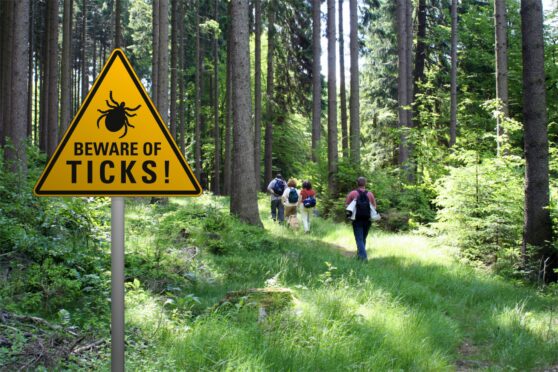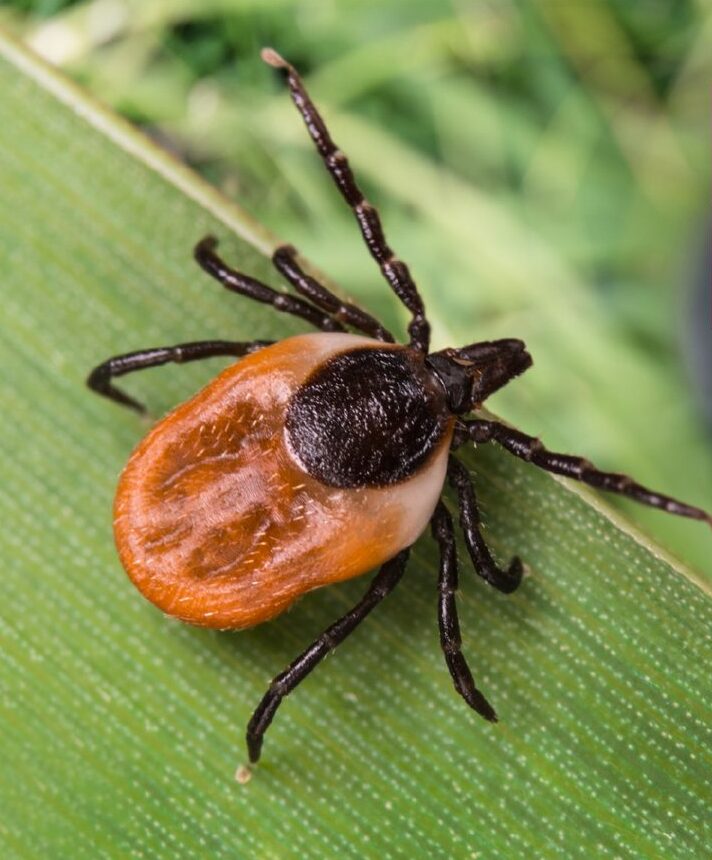
Global warming means ticks carrying infection with potentially life-changing consequences are biting all year round, according to experts.
The blood-sucking insects are also being found in new habitats near beaches and in gardens, according to one of the world’s leading experts, Professor Jack Lambert of Scotland’s Lyme Resource Centre.
He fears Scots are facing “a new epidemic in tick borne infections” but said a lack of investment in testing and awareness is leaving patients facing years of unexplained illnesses that can devastate lives.
Professor Lambert said: “Ticks were seasonal. But global warming has extended those seasons and precipitated the spread of ticks which are being found to host an increasing number of pathogens.
“Changes in our eco systems are pushing humans into closer contact with ticks. Multiple bacteria are likely infecting humans, and the reported cases to public health authorities are grossly under-estimated. Many patients are diagnosed with other conditions such as chronic fatigue syndrome, ME, FND, fibromyalgia, chronic headaches without Lyme disease being part of the differential.”
Lambert added: “Of the few thousand cases a year we do get to know about in the UK, Scotland is highly represented with at least a quarter.”
He warned we are still only diagnosing “the tip of the iceberg”.
Disease-carrying ticks are not only being found in deer and sheep, but also in migrating birds and small animals which means an even greater chance of infection. Tick-borne encephalitis has now been identified in Devon, the New Forest and Norfolk – all areas which have not previously been associated with tick bites. Lambert said:“We are dependent on inadequate immunological tests to measure the host immune systems response to an infection.”
If identified and treated with antibiotics quickly, infection can be brought under control.
But Lambert said: “We are increasingly learning more about “long covid” because of the investment of research monies into this condition. Sadly, no research money has been put into better understanding the effects of “long Lyme”, despite the fact that studies in the US have shown similar abnormalities in the brain.”
For the first time across Scotland, pharmacies are taking part in a public awareness campaign with posters appearing in shops.
Janey Cringean, 60, was bitten by a tick while walking in Beecraigs Country Park in Bathgate, West Lothian, in 2004, and her life has never been the same.
She said: “I now do as much as I can to raise awareness and after years of campaigning on this issue, I’m delighted we now have pharmacies putting up posters and local authorities putting up signs in areas where ticks are known to be prevalent.”
She added: “We still have a huge way to go as far as being able to adequately test all those who may have suffered a bite. Too many people are left struggling for years without a proper diagnosis, and the effect can be devastating. Some are left suicidal because their concerns are being discounted.”

Enjoy the convenience of having The Sunday Post delivered as a digital ePaper straight to your smartphone, tablet or computer.
Subscribe for only £5.49 a month and enjoy all the benefits of the printed paper as a digital replica.
Subscribe © Supplied by Shutterstock
© Supplied by Shutterstock